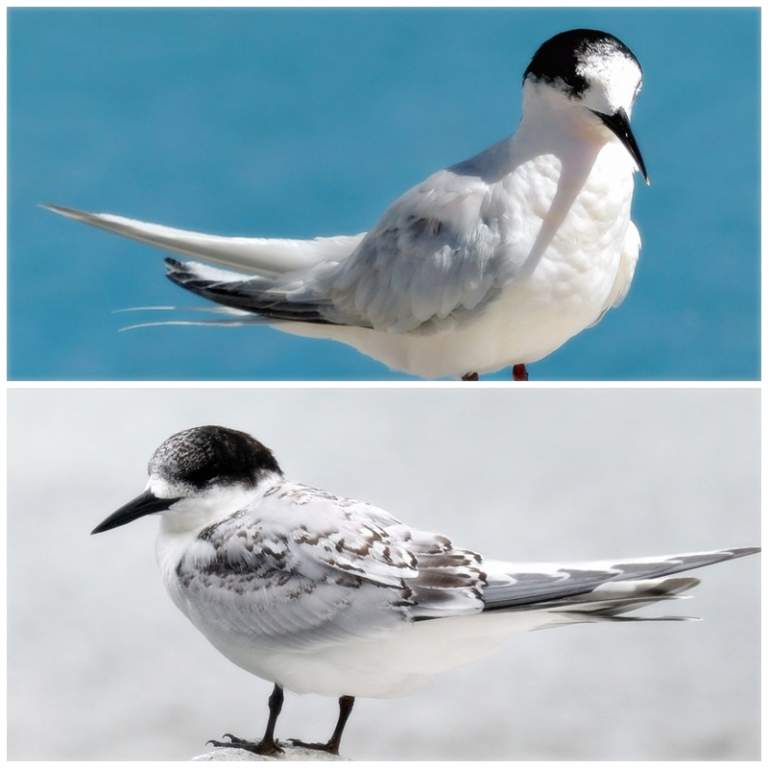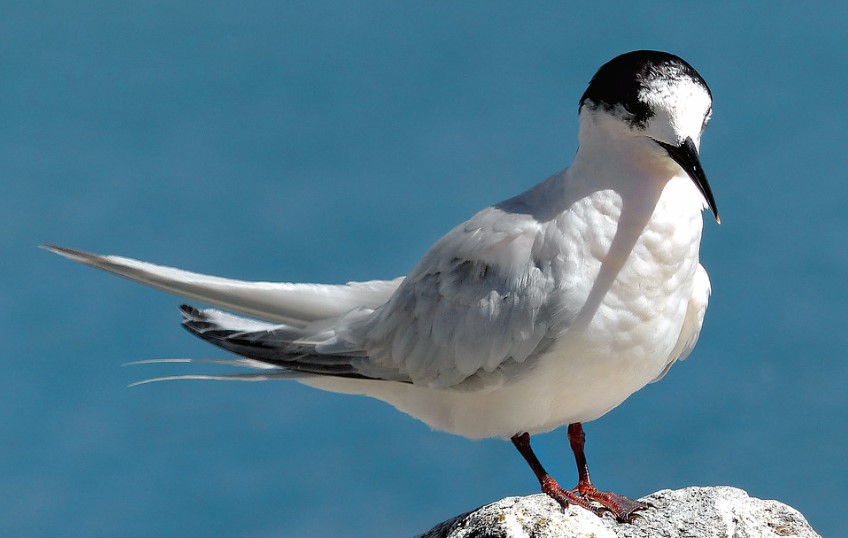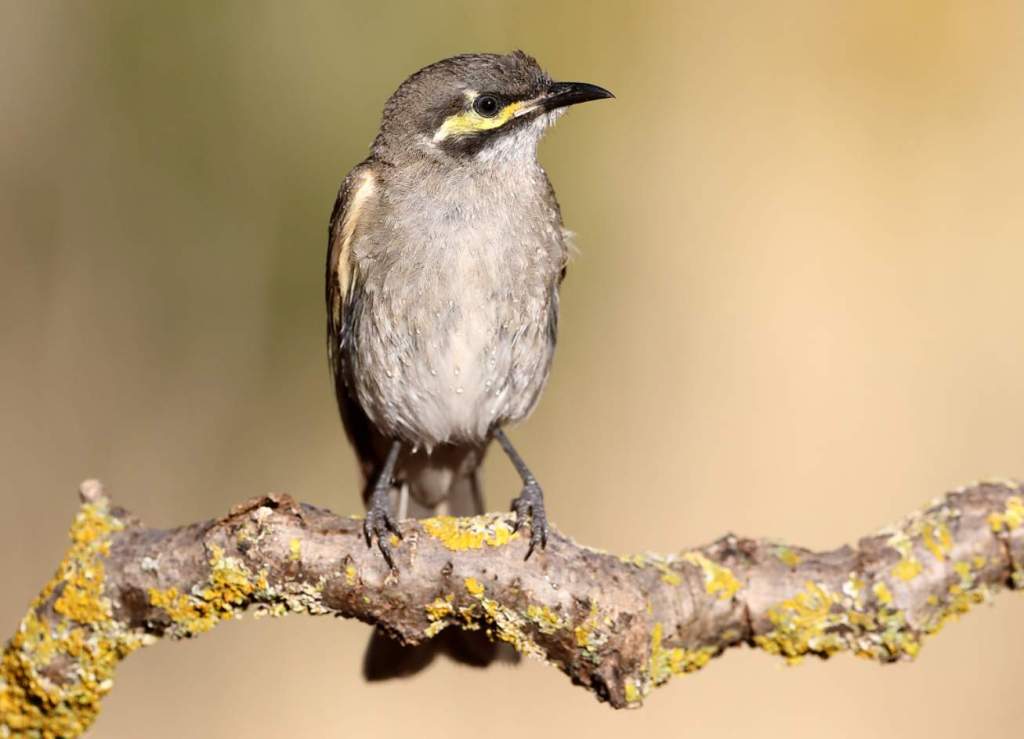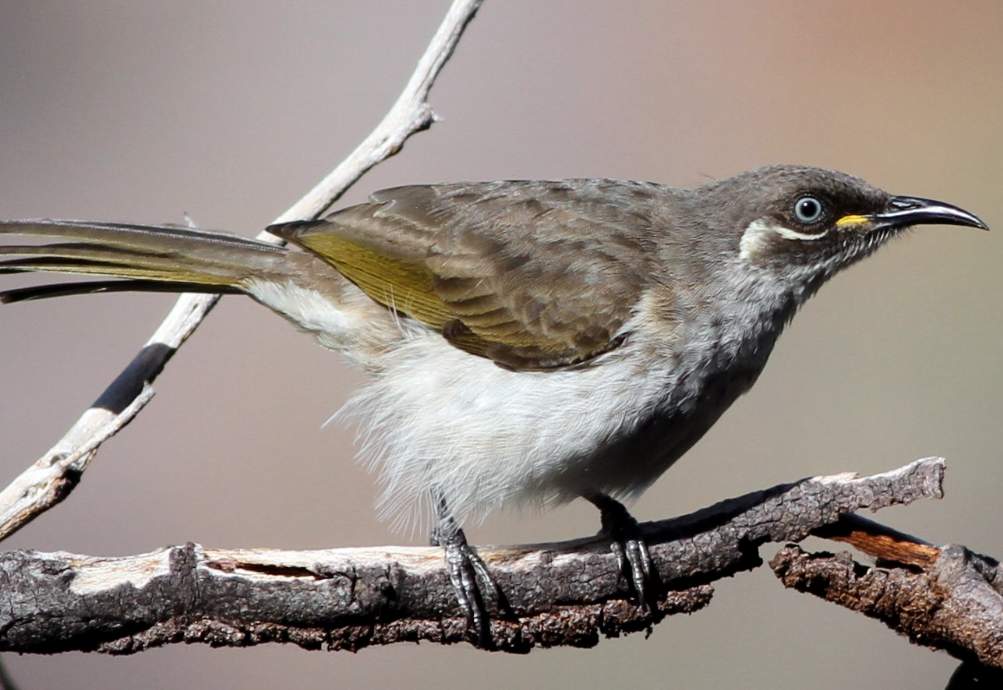Habitats & Behaviour: In Australia, the White-fronted Tern is an endemic marine species, never found inland; in contrast, in New Zealand, where it breeds, the White-fronted Tern forages at the mouths of rivers, where it can be found in the estuaries. It is often found with the Crested Tern, but the streamlined form is more easily distinguished by its smaller size and the black bill allowing it to always be distinguished from the Crested Tern.
As with all birds of its kind, it is gregarious, feeding, roosting, and taking care of each other as a group. This bird prefers offshore rocks and reefs for resting and roosting, but it may also settle on the sea as a site of rest and roosting. There is a gracefulness and buoyancy to its flight as it soars for prey on and just below the surface from a height of six to ten meters or from lower down over shoals as it swoops for prey.
Almost all White-fronted Terns that breed in Australian waters travel back and forth from New Zealand every year, and nest in areas where tussock grass and similar low plants can be found, apart from a few small foundling colonies in the east Bass Strait islands. As they migrate along the southeast coast each year, they arrive in May and depart again in October-November, although they do leave a few non-breeders behind each year who do not breed.
Approximately five percent of migrants are adults; the remaining adults stay around New Zealand all year long, even though the majority of migrants are immature all year round. There are two kinds of plumage seen in Australia during the non-breeding season.

Diet: During the winter the White-fronted Tern feeds only on fish, which it catches from the surf as well as from clearer waters farther out in the ocean.
Size: In terms of size, the White-fronted Tern measures about 400-420 millimeters in length.
Identification: The White-fronted Tern is easily confused with the Common Tern due to its white front. It is easy to recognize them, however, as they have a slenderer bill and their uppermost primary web has a black line restricted to its outer edge.
The characteristics of adults are similar for both sexes. The breeding plumage consists of a black crown and nape; a white forehead, lores, and cheeks. There is a mid-grey color on the back and upper wings, with a black leading edge on the outermost primary wings. It is white under the rump and on the tail, with a deeply forked tail and prolonged outer streamers.
The underparts of the bird are all white with faint rosy blooms on them. The eyes are brown in color. The bill of this bird is black in color. Reddish-brown is the color of the feet. As you can see, there is white mottling on the crown of the bird when it is in non-breeding plumage. It has a brown back as an adult non-breeding bird, while the upper wings and shoulders are shaded dusky, as an adult non-breeding bird. There is a white to dark gray or brown dusky young which is sparsely spotted.
Call: The White-fronted Tern makes a rasping and high-pitched sound as well as a call of a keh-kreeahk-kreeahk, as well as a tsit-tsit-tsit. When they are descending on an intruder, they will continuously let out a ‘keark’ sound. Generally, the most common way in which individuals call between each other during flight involves a high-pitched “siet” which is repeated repeatedly at particular intervals for the duration of the flight.
Nest & Breeds: Breeding and nesting take place between October and January, in small colonies that are closely related to one another. The nest takes the form of a slight depression in the ground that is surrounded by tussocks, shingle beds, or rocks.
Eggs: The White-fronted Tern lays two eggs; occasionally three eggs are laid; the eggs are slightly glossy stone-colored, blotched, and spotted with umber and grey, and they are oval-shaped, measuring 46 x 33 mm. Both sexes undergo an incubation period of about 25 days.
Alternative Names: Johann Friedrich Gmelin described the white-fronted tern (Sterna striata) in 1789. The bird is also known as the sea swallow, black-billed tern, kahawai bird, southern tern, and swallowtail.
Distribution: Winter migrants of the White-fronted Tern are found primarily on the southeast coast, while they are occasionally found north to about Rockhampton in Queensland, and west to the South Australian gulfs. A small breeding colony has recently been established on the eastern Bass Strait islands, the Chatham and Auckland Islands.
It breeds in New Zealand, Chatham, and the Auckland Islands. Despite their rare appearance in the interior of the country, there have been reports of them making their way into the Canterbury area to nest and feed along the large braided rivers in this area.
Races: There is no race.







